Tomb Raider IV-VI Remastered review
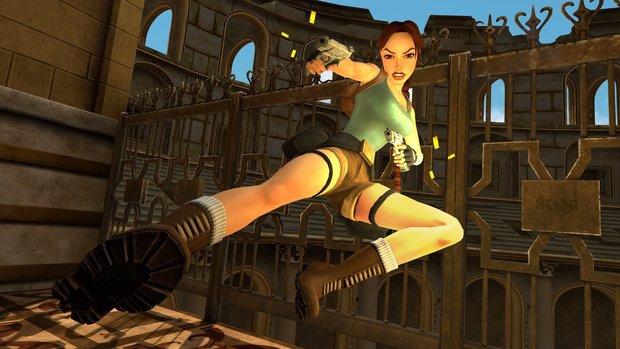
- 0 Comments
A few misfires prevent the uneven new trilogy of Lara Croft adventures from reaching the same heights as its predecessor
When Aspyr and Crystal Dynamics released Tomb Raider I-III Remastered I was thrilled, because the series’ impact on gaming culture cannot be understated but the games themselves had become seriously dated. Now the next batch of three games have been updated, which surprised me more because even when they were first launched, reception towards the franchise had already started to cool, and I wondered whether time and a shiny new veneer would make Tomb Raider IV-VI any better than they were some twenty years ago. Fortunately, after playing through these games again, I am (mostly) pleasantly surprised at the effort put into beautifying these more experimental titles.
Tomb Raider I-III shared a common protagonist in Lara Croft, but could be enjoyed as completely standalone adventures. There was some continuity between games – mostly in the treasure on display in Lara’s mansion – but you could play them in any order, and aside from a few new acrobatic abilities and an increased arsenal of weaponry introduced each game, the experience was relatively seamless. Tomb Raider IV: The Last Revelation and Tomb Raider V: Chronicles, on the other hand, took a different narrative approach, and Tomb Raider VI: The Angel of Darkness was an even greater departure from established norms.
Tomb Raider IV: The Last Revelation
The Last Revelation (TR4) initially launched in 1999 for PC and PlayStation. As publisher, Eidos had been pushing Core Design to release new Tomb Raider games annually, and with great critical and commercial reception, it’s not hard to understand why. The first film adaptation and a comic book series were also on the horizon. It was peak Lara-mania, but fans, and the developer, seemed like they were getting a bit tired of the same old. TR4 was – at least at some point in the planning – intended to pause the franchise, and possibly even kill Lara at the game’s conclusion. That didn’t happen, but in a sense, that is what this game is about: death.
There is no option to go to Lara’s mansion in TR4, the first time it had been omitted. Instead, the initial level acts as a training ground, with players assuming the role of teenaged Lara. The game opens in 1984, Cambodia, with Lara accompanying renowned archaeologist Werner Von Croy. Lara has no guns here, and is at the mercy of her instructor as he teaches her how to successfully navigate the dangers of ancient ruins. It’s a beautiful excursion, keeping the gameplay slow and allowing players to appreciate the environments and puzzle solving without any combat. It also smartly introduces new movement mechanics like the slide, and shows how friendly NPCs will play a greater role this time around. It’s no Croft Manor, but the foundation built in this tutorial level adequately sets the game apart from its predecessors in terms of both gameplay mechanics and narrative involvement.
Before this Lara was always a woman of few words, but in Cambodia we witness her as a lippy teenager, and the banter between teacher and student is a treat. There is even a race in the second half of the level in which Lara can beat Von Croy to a prized artifact if she’s quick enough, or be subject to his gloating if not. As good a teacher as Von Croy is, however, he is also prone to mistakes, and after a not-so-successful attempt to pilfer said artifact, a rift grows between mentor and apprentice. The game then fast forwards to present-day (well, 1999) Egypt, with Lara and a guide descending into a tomb. The circumstance of Lara’s latest trip is soon revealed to be the resting place of Set. Lara finds the god’s sarcophagus, removing the ankh seal and inadvertently setting him free.
Things become more complicated with the revelation that “he” who removes the ankh will set in motion an apocalyptic chain of events. Von Croy, left with an injury to his leg after their session in Cambodia years prior, is now an adversary also on the hunt, and when he steals the artifact from Lara, the story develops into a tense race across the country to retrieve the Armour of Horus and stop the evil Set before it is too late.
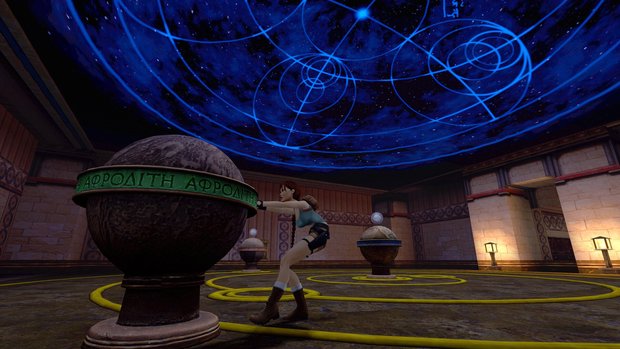
Where the previous games spanned several locations around the globe, comprised of three or four distinct levels each, The Last Revelation takes place entirely in Egypt (save for the Cambodia opener). The first few levels are fairly self-contained, getting players back into the flow, but later ones routinely become more like sections of a bigger map. The Temple of Karnak, Coastal Ruins, and Cairo levels, for example, include multiple areas (separated by loading screens) connected by things like locked doors requiring keys. It can be hard to keep track of inaccessible pathways throughout these interconnected areas as there is no in-game map, so it’s best to keep notes or commit to completing levels in a single sitting so as to not lose track of your goal. It’s intimidating, but the increase in challenge (and scale) is a welcome step up for series veterans.
Other levels are shorter, more linear affairs, like when Lara has to make her way to the front of a moving train, fighting combatants along the way. Vehicles make a return as well; while sometimes they're simply tools to navigate the environment, in other places they are used for chases. The way action sequences have been re-imagined from the previous entries’ tradition of short gauntlets of traps into both on-foot and vehicular chases in TR4 is a shining example of Core Design’s ingenuity, and a great display of the franchise’s aging engine still having a few tricks up its sleeve.
Combat has also had an overhaul, at least conceptually. While the basic gunplay of hopping about avoiding enemies while Lara automatically aims is still intact, there are fewer weapons in her arsenal this time around but more ways to use them. The shotgun, for example, now has two different types of ammo, and is able to knock even the hardiest of opponents down (or trap them in a pit). The crossbow features multiple ammo types as well, allowing you to add explosives for a quick kill. A scope can be mounted onto the crossbow and revolver, allowing for precision shots on environmental triggers or weak points on an enemy. Aiming through this first-person scope has never felt great, but it’s still a neat addition to the combat mechanics.
Other enemies in The Last Revelation create different challenges to adapt to. Scorpions and crocodiles can be dispatched easily enough with repeated firepower, but mummies, for instance, require different tactics, as they cannot be permanently killed. A charging bull late in the game is actually part of a puzzle, and the Desert Warriors (masked guards armed with blades capable of reflecting Lara’s fire), can circumvent obstacles as dynamically as Lara can, even using monkey bars. Scarabs can only be deterred by holding a torch, and poisonous animals will now cause the screen to begin warping while slowly draining Lara’s health if she does not address her condition with a medipack, which adds a nice bit of suspense to the gameplay.
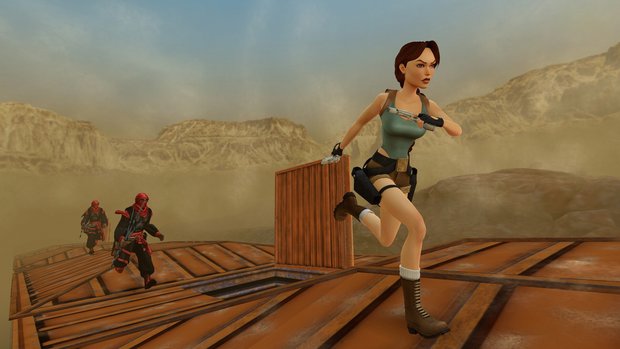
Despite being the game’s only (primary) setting, Egypt is anything but bland. The sky changes from beautiful blue to apocalyptic black throughout Lara’s quest, and lighting plays a big role in setting the mood for ruins in various states of decomposition. It’s the darkest game (in terms of actual lighting), which can be irritating as it forces you to consume many flares, but this acts as a nice contrast to the sunbaked deserts and beautiful coastlines explored in the outdoor areas. The scale of these levels is simply massive, and there are several works of architecture that will likely cause you to stop in your tracks, gazing in awe.
The remastered textures make the environments look stunning. Many details have benefitted from new flourishes, like cobwebs and piles of rubble, in addition to hi-res bump mapping. Skylines have also been updated with rolling clouds and other little details like a dense tree canopy in Cambodia. Character models look great, with in-game Lara once again resembling her cinematic model. Lighting effects like lens flares were big deals for TR4 when it was first released, and the updates to the lighting make it look just as jaw-dropping in this HD version. Lara casts a full shadow now, instead of just a simple dark spot directly under her. Even items in her inventory have been fully remodelled, which is a nice treat for those interested in inspecting Lara’s equipment and artifacts up close. Cutscenes are still in 4:3 resolution, but transitions between gameplay and cinematics are less jarring than before.
Voice acting is top-notch, which is nice given the considerable increase in dialogue over previous games. Jonell Elliott takes over from Judith Gibbins for Lara, and while not my favorite rendition of the character, her softer tone drives home Lara’s cool head even in the most dire and personal of circumstances. While the game is mostly quiet, when the music composed by Peter Connelly chimes in for certain sequences, it is wonderful to listen to. Epic brass and orchestrated tracks complement the action, thickening the suspense and making the adventure feel like a truly world-shattering threat.
Puzzles often boil down to the same key-collecting formula of past games, with challenge stemming more from environmental navigation than figuring out what key goes where. There is a combination mechanic for puzzle items this time, however, though it's not overly complex. Other puzzles have you walking on tiles in a certain order, playing an (admittedly pointless) board game against a mysterious entity, and altering room architecture, like a particularly cool early puzzle that has you rotating a room built like an MC Escher drawing in order to navigate your way to the exit. Mirror puzzles revealing clues about the environment are another new trick, and rope swinging and levers (typically out of reach that Lara will need to grab onto and use her whole body weight to pull) also make for wholly new brain-bending scenarios.

There were NPCs in previous games who would help you in combat unless you fired upon them. In TR4 their role has been expanded to act as guides, walking through the environment on a set path, revealing traps or showing the intended route, to help players along.
There is more “magic” present in The Last Revelation, such as Lara setting an artifact into a placeholder between two obelisks, only for it to activate the stones to generate electricity. She doesn’t comment on this, nor is it really ever explained, but the experience of unlocking ancient knowledge seemingly untouched by other treasure hunters (or tourists) evokes a welcome sense of discovery in the ruins you explore.
Other new game mechanics include looking through zoomable binoculars, and being able to round corners while shimmying. The latter was a curious omission in previous games, but being able to do so while climbing is a nice addition, so better late than never.
The previous Tomb Raider remastered collection included the ‘gold’ versions of its games, adding a few extra levels that were originally only available through PC re-releases. The only such expansion here is the bizarrely licensed ‘Times’ level, only ever available as a download on PC. This sequence starts off in the offices of the titular newspaper in London, and it’s a ridiculous but fun reminder of just how big a star Lara was at the turn of the millennium.
Add it all up, and TR4 is a fresh take on the formula established in the first three games. It’s the most ambitious in its puzzle design and variety, the most varied and exciting in its combat, and undoubtedly the biggest in terms of architectural scale. It’s also the most challenging entry, seemingly aimed at pleasing the core audience, though that’s not to say a newcomer couldn’t enjoy it as well. The HD remaster is simply stunning, and whether it’s your first or fiftieth time exploring Egypt in Lara’s boots, it’s well worth enjoying the graphical advancements and architectural re-sculpting on offer.
Tomb Raider IV: The Last Revelation Remastered rating: 83%
Tomb Raider V: Chronicles
The Last Revelation ends on a cliffhanger suggesting that Lara has perished beneath the sands. Chronicles (TR5) begins with a newscast stating that the famed archaeologist has indeed been lost. Four of Lara’s close friends gather at her home for a funeral, though they all state their hope that Von Croy’s efforts to recover her body in Egypt will produce good news.
TR5 once again offers no option to visit the mansion, instead taking place over a series of flashbacks set up by her friends. Thus, the levels play out as a series of short, disconnected microadventures. Chronicles retains TR4’s increased frequency of in-game and between-level cutscenes, but the structure has reverted back to the smaller, self-contained level format of the original three titles.
The first of these adventures sees Lara travel to Rome to find the Philosopher’s Stone, racing against Tomb Raider I villains Pierre and Larson. The interactions between these three are comedic, which is a nice break from the game’s otherwise downbeat tone. The Italian streets here feel akin to Tomb Raider II’s Venice, with familiar architecture mixed with fantastical flourishes. The streets are barren, however, and a bit creepy. The emptiness is no doubt due to the supernatural and ancient creatures you’ll encounter and need to defeat in combat, but a more lively Rome utilizing friendly NPCs would have been nice.
Despite telling its own standalone story, there is a bit of backtracking and weaving between areas, making this section of the game feel somewhat akin to TR4. There are only three levels in total, but areas like the Colosseum are breathtaking, and the way Core Design has built these familiar landmarks into fantastical and untouched ruins ripe for Lara to explore (and rob), is wonderful.
Tightrope walking is a new mechanic introduced here, and while mostly a superfluous addition, at least it was something new to try in the (then) five-year-old franchise. The puzzles are mostly standard fare, though once again players are forced to use the gun and scope to solve certain scenarios, which can be frustrating due to the slow and imprecise aiming speed of the camera when enabled. The level ends without much build-up, as Lara simply takes the stone from a hole in the wall, but it’s a picturesque introduction to The Last Revelation, even if it’s not as memorable as Lara’s previous excursions in the Mediterranean.
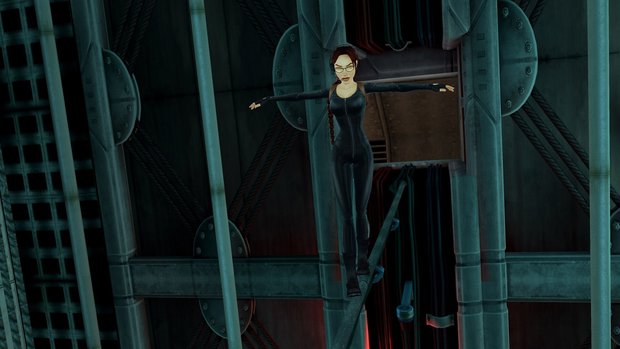
The second set of levels sees Lara infiltrate a Russian naval base and nuclear submarine as a rogue oligarch directs a former Soviet admiral to find the Spear of Destiny, lost at sea on a sunken German U-boat during the Second World War. The opening sequence in a warehouse has Lara avoiding an aggressive crane operator as he attempts to crush her while she navigates a series of shipping containers in order to reach the control room. It’s an action-packed scene, and a sharp detour (aesthetically) from the streets of Rome at dusk. Once on the submarine proper, the game’s new stealth mechanics are introduced. It’s hardly Metal Gear, as Lara can only walk up behind a predetermined enemy and surprise them, but it’s of greater use later on.
The submarine level features the only vehicle sequence in TR5, in the form of an Extreme Depth Suit. It’s a short section, though, as Lara simply grips onto the propulsion unit on her short trip to the U-boat ruins and back, which is a big disappointment. Revisiting the nuclear sub afterwards is just a lesser rehash of the first runthrough, now with downed power lines and flooded areas. It’s an interesting chapter narratively, with Lara and the admiral forming a fun camaraderie, but the touchy platforming in cramped areas with low ceilings and “floor is lava” mechanics make it tedious and unenjoyable by the end.
The third scenario puts players back into teenage Lara’s boots as she follows Father Patrick to a remote Irish isle. Lara has no weapons in this sequence, and thus is forced to evade the island’s creepy demon inhabitants by fancy footwork alone. If the stealth mechanics were meant to capitalize on the popularity of Metal Gear, the Gallow Tree level is an attempt to tap into horror themes and channel a bit of Silent Hill’s aesthetic with its thick darkness and unsettling humanoid enemies. While it’s never unbearably scary, it is an interesting diversion in terms of setting and tone.
The puzzles here are mostly platforming in nature, but a few challenges require you to find a way to dispose of enemies without weapons. The sequence involving stealing a mermaid’s gold stands out as particularly compelling. Item combination plays a role here too. One puzzle has you creating a catapult to shoot a stone lever mechanism behind a poorly assembled wooden gate; once activated it will swing down and break open the gate. The solution is self-explanatory enough when you look in Lara’s inventory, but it’s an obtuse way to open a door that looks like it could be pried open or squeezed through easily enough. Elsewhere Lara finds a bestiary located in the catacombs, taking it for no reason other than it might be useful later on (which it is, to her credit). It’s a neat display of teenage naivety, showing Lara develop as a character not through book smarts but through reckless action. Overall, the island is home to some of Chronicle’s more enjoyable levels.
The final episode has Lara infiltrating Von Croy Industries – that’s right, Lara’s not the only mega-rich archaeologist around. Her former mentor-turned-rival now runs a lab focused on harnessing the ancient power of artifacts for weapons production. Lara goes full Solid Snake here, slipping (well, more like vacuum sealing) herself into a sleek black catsuit and donning some cool ‘smart’ shades. She is deprived of her dual pistols once again, but is equipped this time with an assault rifle with multiple firing modes. While she can go in fully automatic like Rambo, ammunition is limited, so switching to burst mode or single shots is best for this section. Most enemies can be taken down with a headshot, but Lara will also need to break plenty of vent covers with bullets in her navigation through the complex, making ammo a precious commodity.
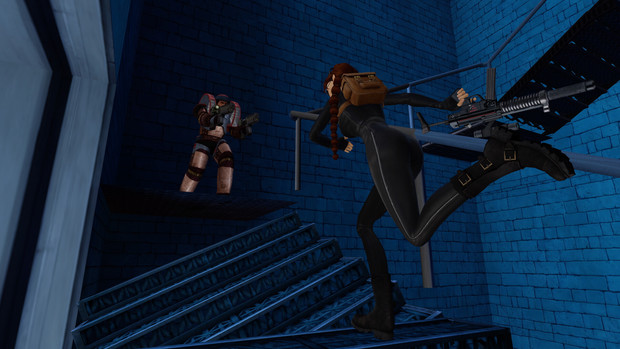
These levels mostly fall into a familiar progression rhythm, but a few new tricks like number pad puzzles are great, as you can spy on guards through your scope, taking note of security door codes. There is a common belief that Tomb Raider is best when Lara stays in the tombs, but the Von Croy Industry levels show that modern tech is just as deadly and well-suited to Lara’s escapades as any cavern or crypt, such as the floating laser security system first seen in Tomb Raider III that makes another appearance here.
Combat is most pronounced in these levels, and the fact that you can snipe some enemies with a headshot before they’ve noticed you, or duck behind cover and use the scope to aim at their weak spot, makes for some of the most enjoyable gunplay in the entire franchise. That said, combat was always the weakest part in the first five Tomb Raider games, and while the varied approach is nice here, its execution remains slightly awkward due to the slow and floaty scope-aiming controls.
Sneaking around comes further into play, and is thankfully implemented far better than in the nuclear sub levels. Searching shelving units and drawers is another new mechanic in TR5, though not nearly enough is done with it, making it something of a missed opportunity. You’ll want to be covert in order to steal security passes and move around unnoticed. You won’t always be successful, as this is not quite a full stealth game, but the parts where Lara gets to dodge lasers and outrun a helicopter are adrenaline-fueled fun.
Secrets in Chronicles are represented by golden roses hidden in the environment and must actually be collected and added to your inventory in order to count. (Secrets are similarly embodied by golden skulls in The Last Revelation in the Cambodia level, after which they’re marked only by the familiar chime sound effect.) Some of these roses are accompanied by pickups like ammunition or health packs, but others are simply concealed areas, challenging players to explore.
The new graphics look great, with plenty of additions not only in terms of environmental lighting and remodelling, but with updated 3D models. One particularly effective sequence in a church in the Labyrinth level features a body covered in a sheet sitting upright in a pew. I was playing this particular level with the original graphics, but when doing a few quick checks for comparison, was surprised to see a whole new model sitting right in front of me without warning.
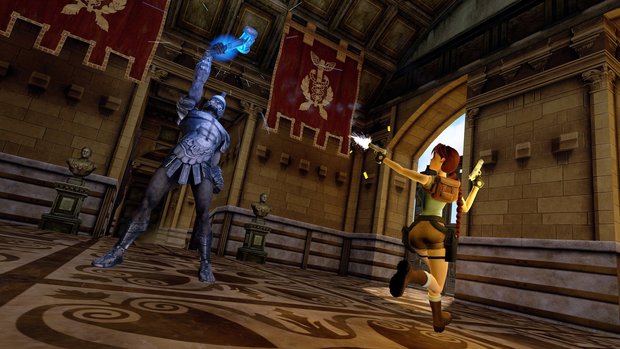
The Rome levels have benefited greatly from the new lighting and water effects, and some textures like flames have even been given an upgrade from the previous remasters. A few more character models have been added here too, though the dawn lighting is really what stands out in these areas. The new clarity of textures makes Rome's restaurants look as realistic as they can be within the engine’s angular contraints, though the streets are built so obliquely that they feel a bit more unsettling and quiet than before, begging the question: who actually lives in such a place?
Some continuity improvements have also taken place in the remaster. At the beginning of the second level, for example, Lara now starts in front of a gate, suggesting that she entered this new area through the door. In the original, she begins in front of a brick wall, giving no indication of how she got there.
The submarine levels benefit from a few new flourishes, like actual food cooking in the kitchen instead of just blurry slop. These are nice, but it’s primarily the Von Croy Industries levels that received the biggest boost from the new graphical enhancements. There are a few texturing oddities in the mechanical control panels, but overall the neon hues look sharp in HD. Lara’s enhanced character model once again looks very nice, and the variety of costume changes in TR5 make these upgrades all the more exciting, if only on a fan service level. The supporting cast of enemies has also improved a lot, and in cinematics the lip-syncing seems better than in the first remaster trilogy.
Lara’s inventory has been updated and rebuilt here just as it was in The Last Revelation. Sadly but predictably absent is Lara’s Timex-TMX, an item exclusive to the original release. In previous games you could open a stopwatch in Lara’s inventory to view your progress in a level, citing stats like time taken and secrets found. However, a licensing deal for Chronicles saw Lara ditch her stopwatch in favor of the bizarre carabiner-styled digital clock. Its removal here is a small (and understandable) change, as the licensing deal that inpired it is long expired, but it was a really cool piece of tech that would’ve been neat to see redone in the remaster.
Both games include retracting/extendable blocks that were new to the series at the time. In the originals, the texture would compress/extend along with the blocks growing or shrinking, making it look less like a block was lifting out of the ground and more like it was organically growing. The remaster has unfortunately not been able to fix this graphical anomaly. While not really detrimental, it is a strange leftover of the engine’s rendering.
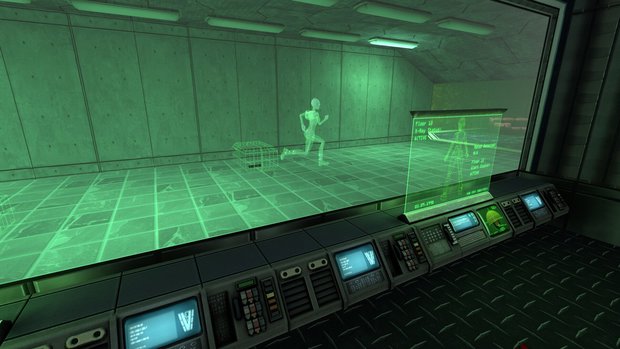
The control layout, like in the previous remasters, is a nice olive branch for the uninitiated who may find tank controls too difficult. However, also like their predecessors, the environments here are simply not built for this style of fluid control, sometimes demanding the very precise setups afforded by tank controls, this time without access to Lara’s mansion to practice. The only training you get in TR4 is the opening level, and in TR5 there is an (easily missable) detour at the start of the first level. It’s trial by fire after these brief introductions, and I would suggest just sticking with the tank controls.
Overall, Chronicles is a weird step back from the more open, continuous design of The Last Revelation. While I do generally prefer Tomb Raider games segmented into defined levels, in TR5 all of the levels (aside from Von Croy Industries) feel slapped together. The puzzles are fine, even if the logic doesn’t always make sense at first, ultimately boiling down to key and lock solutions, while the tightrope walking and searchable shelves/drawers are novel but underused. This game was, and still is, the weakest of Core Design’s original games, but if you can put up with some repetition and frustration, the later levels are at least worth experiencing.
There’s one other benefit for reaching the end, of course, which is (spoiler alert): Lara lives! Chronicles ends with Von Croy digging Lara’s bag out of the collapsed area of the great pyramid from The Last Revelation and declaring her still alive. We never do see her, but Lara is back for what would turn out to be her final adventure from the series' original developers.
Tomb Raider V: Chronicles Remastered rating: 70%
Tomb Raider VI: The Angel of Darkness
Though it followed the same loose narrative continuity as its predecessors, The Angel of Darkness (TR6) was meant to usher in a new era for the franchise with its brand new engine. The game opens with Lara confronting Von Croy in his Paris apartment on a dark and stormy night. But this isn’t the cool-headed, quick-witted Lara we knew from before. Being trapped in the desert has obviously left some scars, and when Von Croy asks for her help with a dangerous client, she refuses. Then the lights go out, gunshots are fired, and Lara finds blood covering her hands while her old mentor lies dead on the floor. So begins another intimate story, this time with Lara on the run, blamed for Von Croy’s death. Ill-equipped and unprepared to deal with it, she must seek out the connections she needs to continue.
Cutscenes are more frequent than ever, and Lara now monologues and writes in a diary, mostly to convey clues but also as another avenue for storytelling. The adventure sees Lara travel from Paris to Prague in her quest to not only find Von Croy’s killer, but to unravel the conspiracy that cost him his life. There’s a lot more interaction with NPCs here, given that it primarily takes place in urban environments, with only a few quick diversions into subterranean ruins. The narrative is also less linear, with Lara given free rein to roam the streets of Paris at certain points and talk with various characters at different points in the story. It’s not quite Shenmue, but with Lara asking for directions and writing down key clues in her notebook, she’s definitely channeling a bit of Ryo Hazuki.
At least, she is for the first part of the game. After Paris, the open world design mostly evaporates. TR6 is inconsistent, both in the way it tells its story and in how it constructs its gameplay loops. It was obvious in 2003, and it’s just as evident in 2025, that the game was released before it was ready. Everything from the leads Lara chases to the favors she does for people all come together in abrupt ways. While it’s not hard to tell what’s going on, the grander narrative elements are clearly lacking. On one hand, this definitely played a part in gathering such a ravenous fandom, which has dissected every environmental clue and development document in an effort to fill in the missing pieces. But for someone just looking to enjoy a good archaeological thriller, it’s a bit of a mess.
Dialogue trees are new this time around, and if Lara is too mouthy, characters may walk away, leaving her to search for an item on her own, or even get shot, ending the game and forcing players to reload their last save. It’s a cool system that gives more insight into how Lara has changed as a character after TR4, but like the open-ended exploration on the streets of Paris, it only lasts a short time.
The new engine meant The Angel of Darkness’s graphical fidelity was vastly improved over previous entries in the original Tomb Raider series, but it maintains many of the same core mechanics. Lara can jump, roll, shoot, and climb. While it may sound like more of the same-old at first, there has been a genuine overhaul to environmental construction. No longer are levels built on blocks; instead the locales look like real places. If there’s a drainpipe mounted to the side of a building that looks climbable, it probably is. If a ledge looks like Lara could shimmy along it, she probably can. There's an almost proto-Assassin's Creed philosophy to the structure, and while it’s still a mostly linear affair, the immersion is great. The platforming and navigation are still very much in line with past games, but the mechanics feel entirely new.
In terms of extra abilities, Lara can engage in hand-to-hand combat and properly sneak now. A stamina bar also accompanies her this time around, meaning she can’t just hang off a ledge by her fingers indefinitely while you figure out what to do. This makes traversing the environments a tense affair, as you have to deftly move between points of interaction, like an overhanging wire or ledge, before she loses her grip.
Sneaking is done by pressing a dedicated button, and is not just an alternate method of walking like in Chronicles. Lara can grab hold of enemies from behind and dispose of them in a single, silent hit. She can also punch and kick enemies if she doesn’t want to use ammo. Melee combat is awkward, though, requiring you to quickly press the action button once for a punch, twice for a one-two combination, or to hold it for a kick. It’s serviceable, and nice to see Lara take care of herself without guns, but it certainly could have been implemented in a more elegant manner.
There are other nonlethal options for combat as well. While Lara has never had a problem shooting endangered animals point-blank before, here you aren’t forced to kill enemies like security guards in the Louvre, with the option of using alternatives like Tasers and darts instead.

Enemy AI is rudimentary; opponents will maneuver around the environment to find Lara behind cover or get a clear shot, but you’ll often see guards walk into walls or stare at nothing, inviting a stealthy takedown. However, the actual gunplay in The Angel of Darkness is outstanding. Lara alters her footwork to sidestepping when pointing a gun, and choosing the right weapon for the right fight is a lot of fun, one of the game’s survival aspects that feels well-implemented. Lara can also stop and pick up an item or interact with a point of interest without holstering her weapon now, which may seem like a minor change, but after five games of performing the awkward dance of holstering and unholstering just to press a switch or pick up a healthpack, it’s a welcome inclusion.
The inventory has been revamped as well, utilizing 2D images rather than 3D models like in previous games. Items you've acquired are now accompanied by short text descriptions, citing details like range (for weapons) and effectiveness (for healing items). New to the remaster is the ability to collect and use Lara’s signature dual pistols. While mostly a piece of fan service, it’s noteworthy that Aspyr went to the trouble of creating an alternative puzzle that requires you to search off the beaten path, like a secret, in order to obtain them.
The sneak mechanics further add a whole secondary set of moves for Lara, like wall hugging, allowing her to navigate the game’s various traps and pitfalls in new ways. These abilities are most notable in the Louvre, where there are lasers and security cameras to avoid, though Prague and the Parisian streets utilize stealth to a degree as well. You don’t have to be stealthy when taking out enemies, though conserving ammo and health items, along with the aforementioned relative ease of getting the jump on enemies, make it a worthwhile endeavor, even if it’s not as satisfying as it could have been.
There is also a leveling-up system of sorts. As Lara interacts with different things in her environment, she will begin to feel stronger. She can then open new doors, push bigger boxes, and jump farther than before. It isn’t a true RPG-like progression system, with players able to repeat acrobatic feats indefinitely to continually upgrade her strength. Rather, these sequences are ham-fisted into the game in an entirely linear fashion, with only set points unlocking her strength upgrades, making their inclusion feel completely pointless. There isn’t even an indication which point of interaction will increase her strength level until after you’ve tried interacting with it. If TR6 had kept the open nature of the Parisian Ghetto, and Lara could go unlock previously inaccessible areas with her new athleticism, that would have been neat. Instead, there’s usually a gap too far or a door that won’t budge, and hidden somewhere nearby is a box Lara can do a quick CrossFit set on.
There is also a pawn shop where Lara can take valuables collected during her time in the Parisian Ghetto, exchanging them for goods like ammo and health packs. It’s a good idea, but again, it is only incorporated in this one small section of the game.
Once you leave the Louvre and enter the Archeological Dig level, and the Hall of Seasons beneath, the game begins to feel like classic Tomb Raider. While the new engine’s mechanics are interesting, if unevenly distributed, the actual puzzle design in The Angel of Darkness is a significant step up. Previous games mostly relied on platforming challenges and exploration to search for keys in order to stall the player. While platforming is still a core part of the experience here, the variety of puzzles allowed by the new engine makes TR6 the most “adventure”-like of the series, even to this day.
You’ll do real archeological fieldwork, scanning dig sites with an x-ray machine, collecting clues for passwords, comparing them to notes left in Werner’s diary, spy on people’s offices using security cameras, or use explosives to break into secured areas. While the gameplay may be unevenly paced, and the narrative setup doesn’t always give you the clearest context as to why Lara is travelling somewhere in particular, the variety of challenges are tailor-made for each location. Descending the ruins beneath the Louvre is a fascinating and suspenseful affair, involving armed combat, fast platforming, and puzzles that require pattern recognition and note-referencing. This contrasts nicely with the slower, stealth-based challenges of the museum aboveground, or searching the Parisian Ghetto for NPCs who can help you access new areas. Whereas the puzzles in previous games could feel overly similar, the challenges presented in each location here are unique and appropriate to their respective settings.
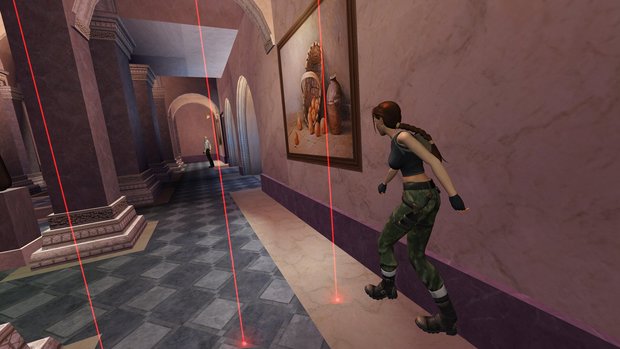
One of the most prominent new features of The Angel of Darkness is its second playable character. Kurtis Trent, a rogue treasure hunter with a storied past, acts as a rival/ally to Lara in her quest across Europe. There is only one small section where players control Kurtis, but the formula is changed up enough that it feels like more than just a reskin, with more emphasis on combat and less on platforming. The remaster has even added the ability for Kurtis to use his Chirugai, a supernatural weapon, which makes completing some of the combat challenges with Kurtis (one in particular) more palatable than in the original release.
The graphical overhaul to TR6 is puzzlingly inconsistent. Switching between the new and original graphics, you’ll notice a slight upgrade to the texture detail. Some are more noticeable than others, like the artworks in the Louvre being crisper. Some of the upgrades have been implemented poorly, however, like a pair of doors near the beginning of the game when Lara is being chased by the police. Lara drops a wooden bar over the doors, even though the "upgraded" door has knobs that the bar would collide with had they been properly rendered in 3D.
On the positive side, the locations in The Angel of Darkness are all a delight to visit. The breathtaking vistas of decrepit tombs, polished marble floors, and wealthy apartments are matched by the convincingly tarnished sewer corridors, abandoned warehouses, and eerie greenhouse laboratories. Atmospheric effects like heat, wind, and murky water make the world more immersive than ever. The amount of content packed into each and every scene is still impressive, with details like bookshelves being fully rendered 3D models instead of just wallpaper images like in past games, for example.
Lara has had an update too, and while her new model doesn’t look vastly different from the original, at least her bangs don’t look like hotdog wieners anymore. Other characters, like Kurtis, benefit from the upgrades too, and some of the supporting characters (like Janice in Paris) have also had their models refreshed. Curiously, however, much of the cast has had no work done whatsoever. Watching Lara interact with someone who, stylistically, barely even looks like the same species as her is incredibly distracting. While the new visuals are certainly an improvement overall, it seems like a half-finished job – not a good look for a game that was originally accused of being half-finished itself. To be fair, the latest patch claims to have addressed some of these graphical irregularities, but in my initial playthrough it was a disappointing first impression.
The changes to Lara don’t merely run skin deep, as there’s a real weight to her movements this time around. The way she reacts to changes in the topography, has to visibly hoist herself up a ladder or wall, or changes her gait and speed to walk up or down a staircase is impressive. She will also interact automatically with certain elements in the environment when you slow her pace and press in the desired direction, like a ladder or ledge, without having to line up and press the action button. A hand icon marks hotspots that can be interacted with when in close proximity to them, helping you read the environments better.
One of the things I was most looking forward to with this remaster was the updated controls for TR6. While I didn’t find them helpful for the original five games, with the structural changes to The Angel of Darkness, I was confident Aspyr would make the game more playable than its original stiff tank setup.
Initially, movement and interaction feel like an enormous improvement. Lara is faster and reacts to the direction you are pushing the analogue stick. However, I quickly came to the realization that the autograb feature does not always work in this new scheme. Lara will jump for a ledge or platform and simply fall through it, even with arms outstretched to grab it. In order to get around these setbacks, I would switch back to the original control scheme just to bypass them and then switch back.
Unfortunately, the entire gamepad button layout changes between versions as well, not just Lara’s movement. Having to relearn the old scheme just for the occasional sequence quickly became too much, and I eventually reverted back to the original layout altogether. This is the most heartbreaking oversight of the TR6 remaster, as the new controls simply do not let you play the game. The original release may have been an inconsistent mess, but it was playable. The latest patch notes state that some “movement fixes” have been addressed, but in my playthrough the result was disappointing.
At least the original controls do still work. No longer being confined to the grid-based layout of the originals but still being stuck with the same movement set does make for some awkward platforming, however, and I fell to my death and missed jumps far more often in The Angel of Darkness than in any of the previous games. One particularly punishing sequence in the Breath of Hades tomb has Lara “hopping” between wavering narrow platforms, and it’s beyond frustrating. The old controls are workable in most scenarios, but collision detection is far more finicky here, and it’s best to save often as Lara will be dying often (though the new ragdoll effects go a long way toward making her fatal plummets comical, if frustrating).
Another strange oversight is that the right stick usually acts as a sort of quick “look” function, but it doesn’t work in stealth mode. It’s not a huge deal, but it would have been a useful feature for peeking around corners when not wall hugging.
Furthermore, many of the bugs that plagued the original version are still present. At one point you can gamble on a boxing match in order to win a gold watch that can be pawned later for extra cash. The first time I activated this sequence, the boxers exchanged a few blows and then just stood there, staring at each other, while the camera excitedly panned back and forth over the ring. I had to hard quit the game just to escape.
Another sequence near the start has Lara evading police as she ascends a derelict apartment building. If she misses a jump at one point, she will fall down to a floor where the police stand in wait. You can run past them, seemingly without consequence, but then several seconds later she will fall to her knees and put her hands behind her head, waiting to get arrested, even though the police are not giving chase, or anywhere near her. This oddity appeared in the original as well, and while not game breaking, it really should have been fixed.
Peter Connelly’s musical score is one of TR6’s most notable successes. While most of the game is quiet, certain rhythms and musical loops will play on repeat in some areas. The scores used for choreographed action sequences and cinematics really steal the show, and if you weren’t playing such a janky game, the soundtrack could be mistaken for a grand Hollywood epic. It’s some of the best music of the series, and the orchestral echoes of it can still be heard throughout the series today.
While far from my favorite of the series, The Angel of Darkness is a nice change from the power fantasy of the first few games. Not only are the puzzles more substantial, but this Lara is a different Lara than before. It feels cool being on the lam, relying on her wits to not only navigate ancient ruins, but to slink through modern society without raising the alarm bells – yet still be more capable than ever of kicking butt whenever things go wrong. Ultimately, TR6 is better in concept than execution, and had the game been in the oven a bit longer, maybe we’d still be playing the Core Design Tomb Raider series today. But that’s not how it turned out, and this remaster, improved as it is in many respects, does little to clean its tarnished reputation.
Tomb Raider VI: The Angel of Darkness Remastered rating: 63%
Final Verdict
Even twenty years later, these three games can sometimes seem like exercises in frustration and exhaustion on Core Design’s part. I still love them, if not as much as the first three, but they are definitely not a good starting point for the uninitiated. This is a collection for the fans, and a very specific subset of the fandom at that. I’m glad we have them, looking better than ever, but most of the nonvisual upgrades are dysfunctional enough that it's almost a slap in the face to those who had hoped for more. Nevertheless, The Last Revelation is still a great, if difficult, game, and the remaster looks stunning. Chronicles is good but less impressive, and it’s a shame that its best levels are saved for last, meaning you have to make it through several hours of mediocre tomb raiding just to experience them. The Angel of Darkness certainly looks better than it did in 2003 (albeit with inconsistent upgrades) but even with some intriguing new ideas and a few Easter eggs, it is too often a drag to play. All in all, then, while Tomb Raider I-III Remastered is a treasure trove of classic action-adventure games revived, Tomb Raider IV-VI Remastered is more of a cursed artifact. There’s adventure to be had, but at a cost. Open with caution.
Hot take
Lara’s last three adventures from Core Design play differently enough from the first trilogy that serious fans will want to check them out. However, with inconsistent visual and mechanical upgrades, and a higher overall difficulty, Tomb Raider IV-VI Remastered is not a good jumping-in point for newcomers.
Pros
- Graphical update for The Last Revelation in particular is phenomenal
- Much more adventure-like puzzle design in two of the games than ever before
- Innovative new combat mechanics
Cons
- Hi-def textures, while mostly good, look a bit awkward (or underdeveloped) in Chronicles and The Angel of Darkness
- Modern control scheme is still not overly useful
- Tomb Raider VI remains a buggy mess
Drew played his own copy of Tomb Raider IV-VI Remastered on PC.








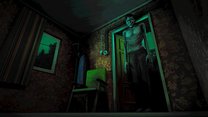


0 Comments
Want to join the discussion? Leave a comment as guest, sign in or register.
Leave a comment